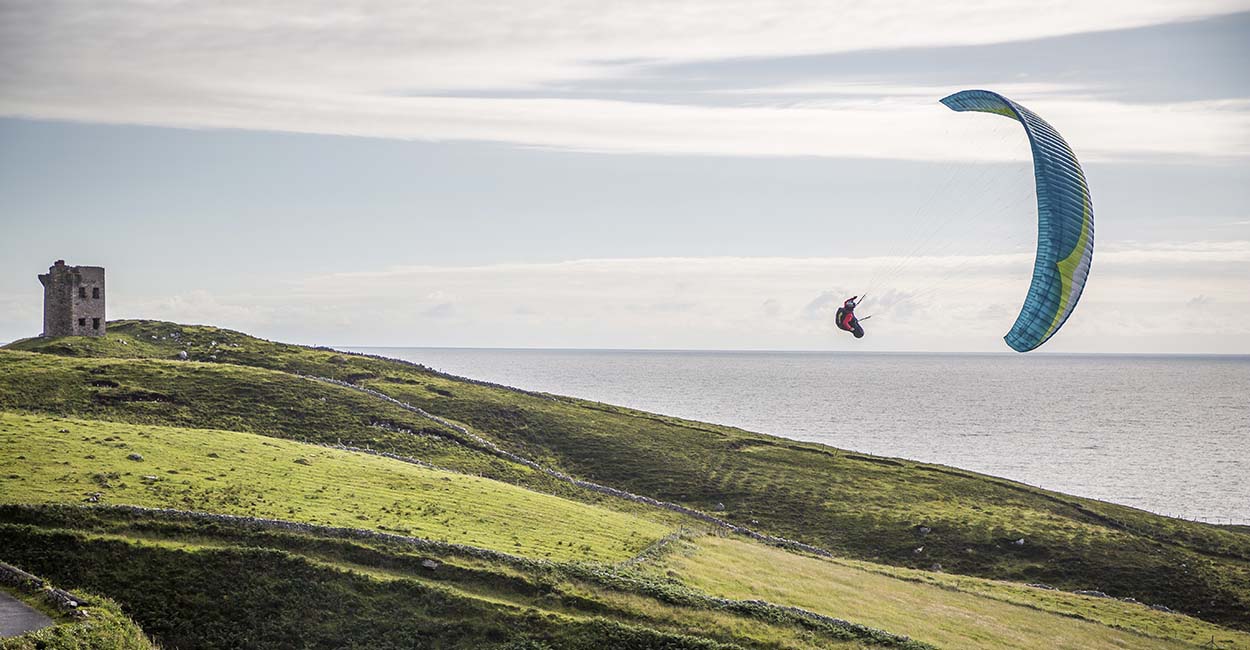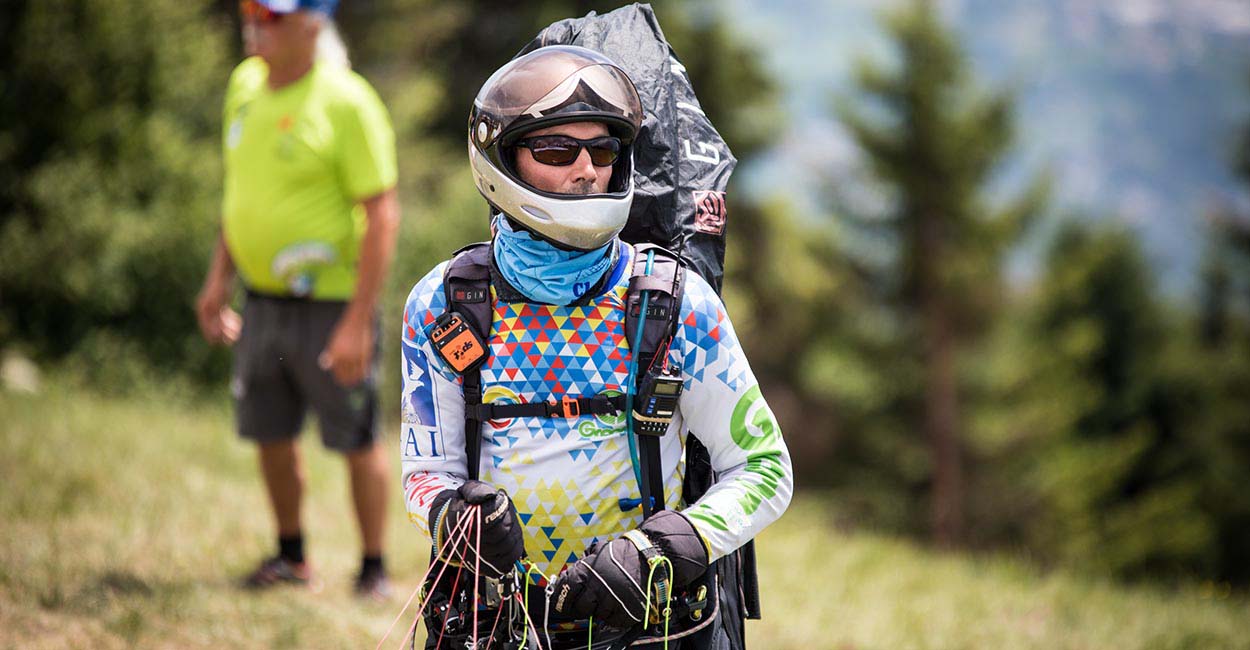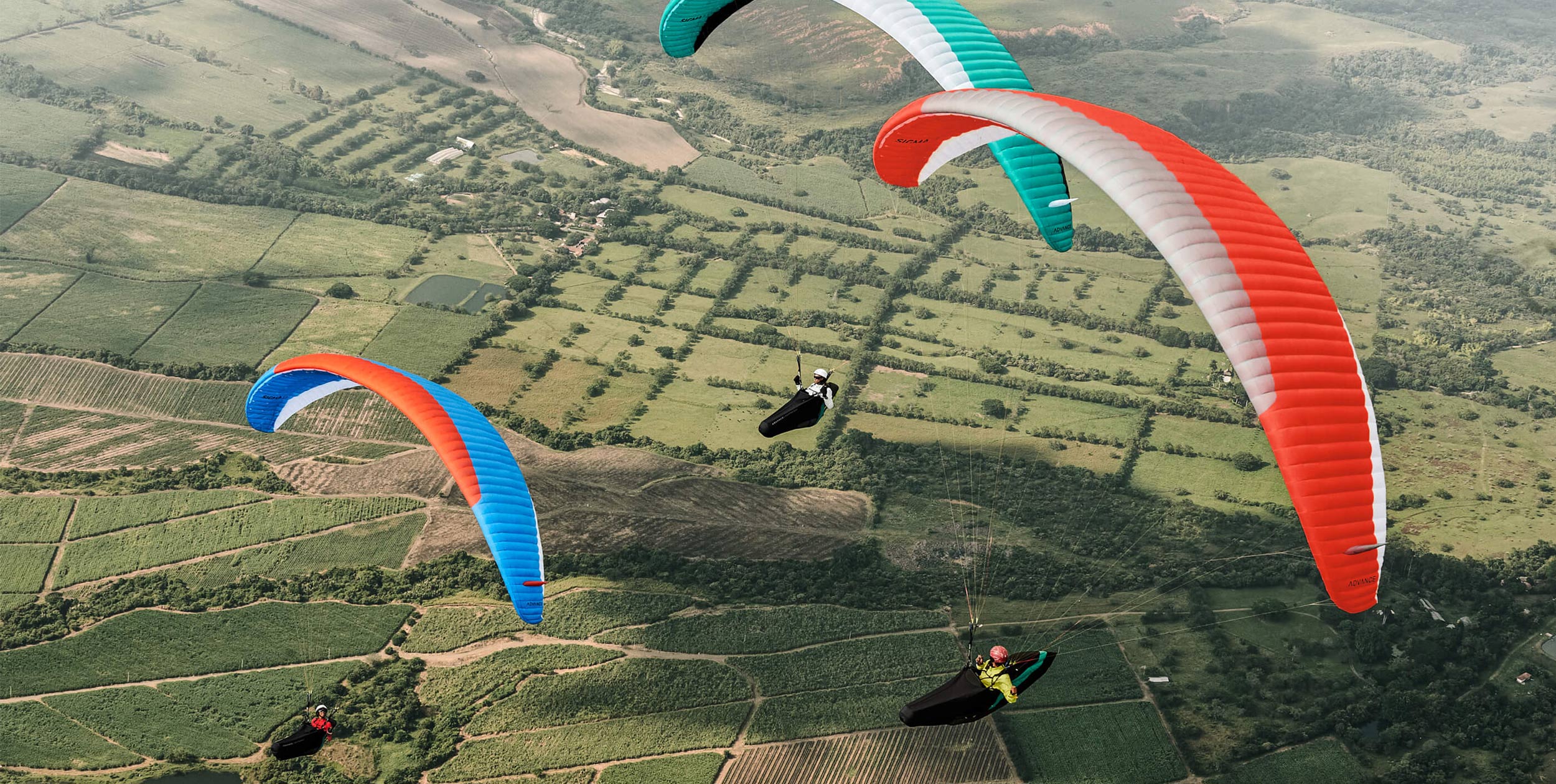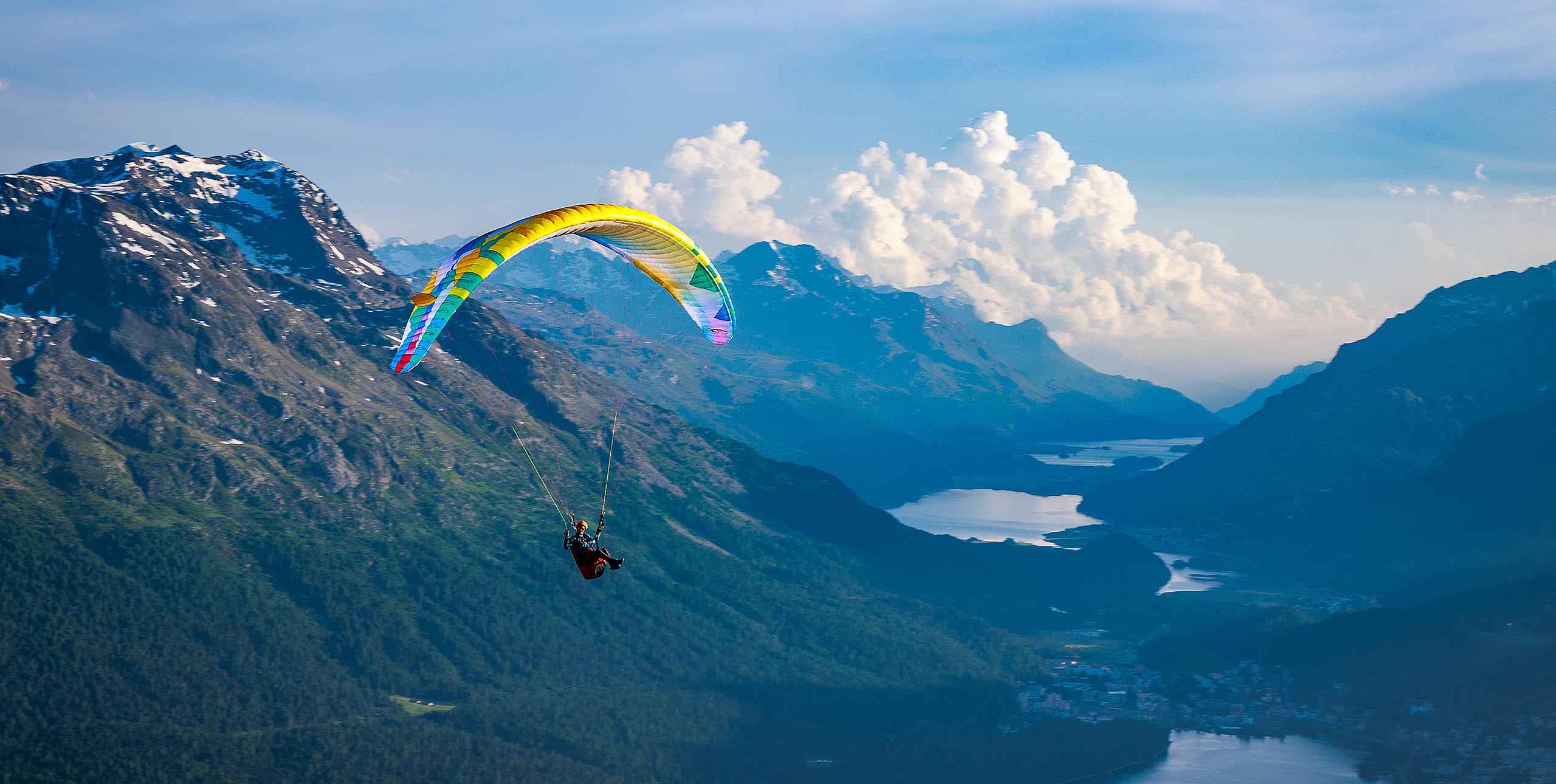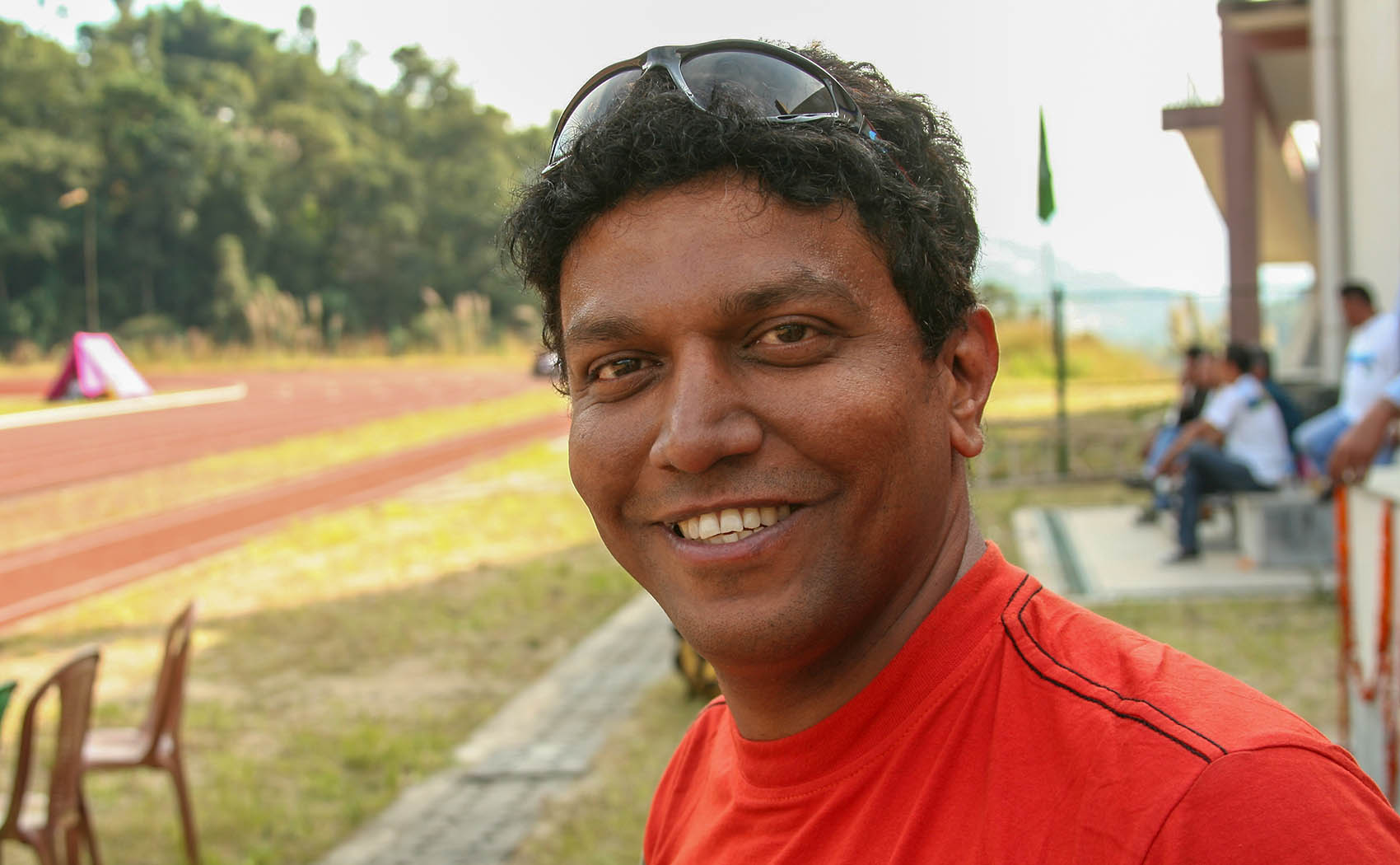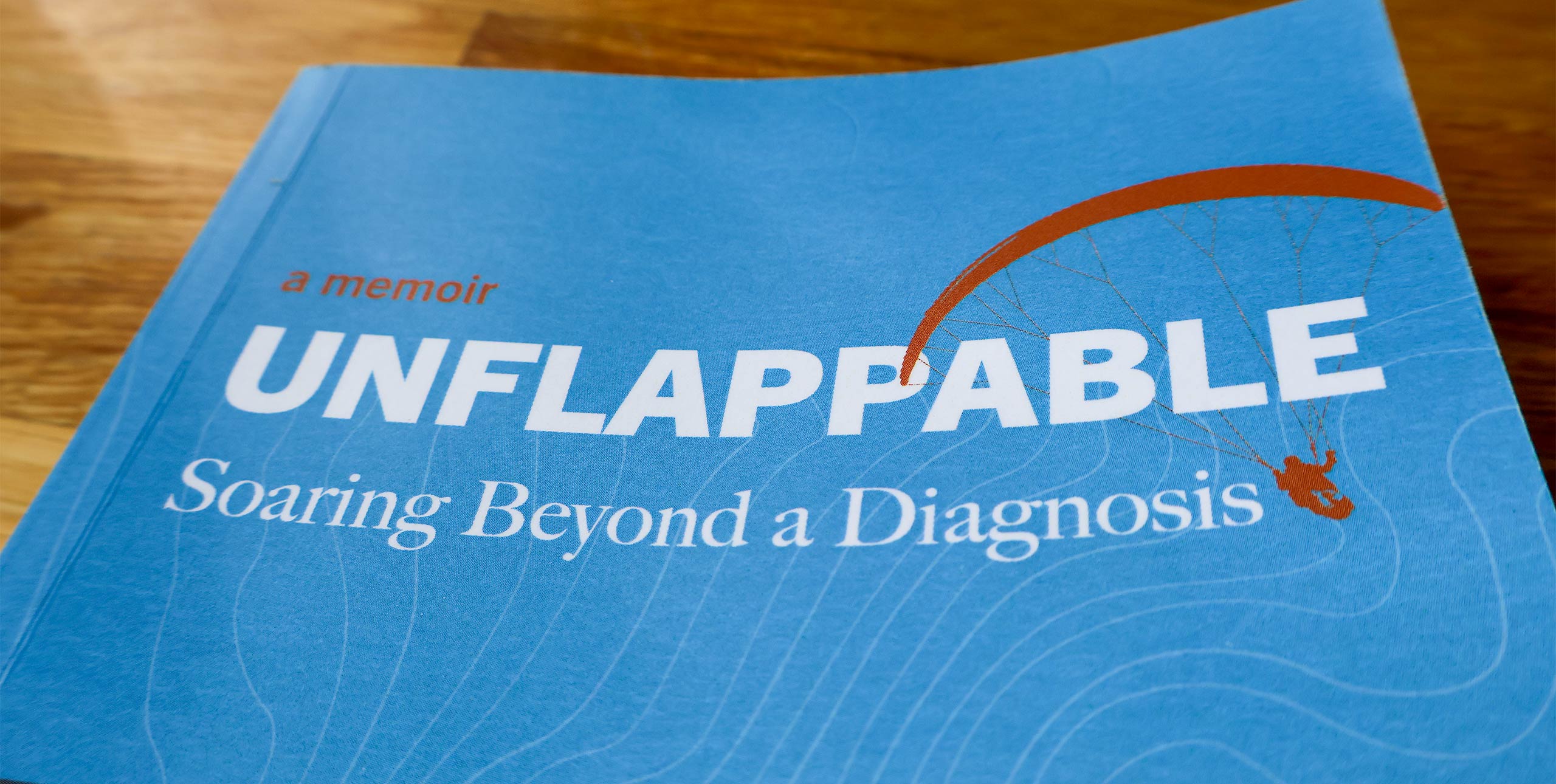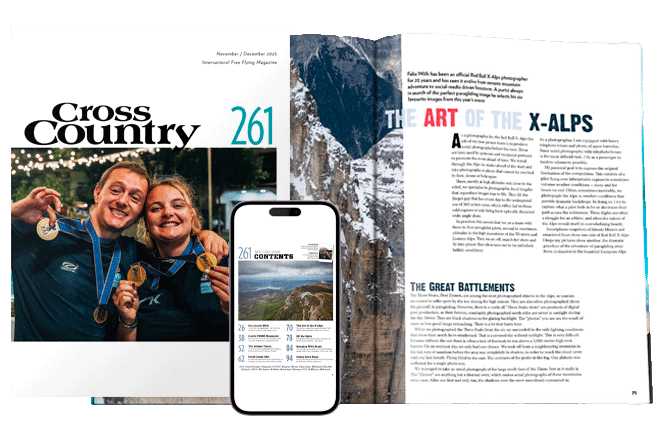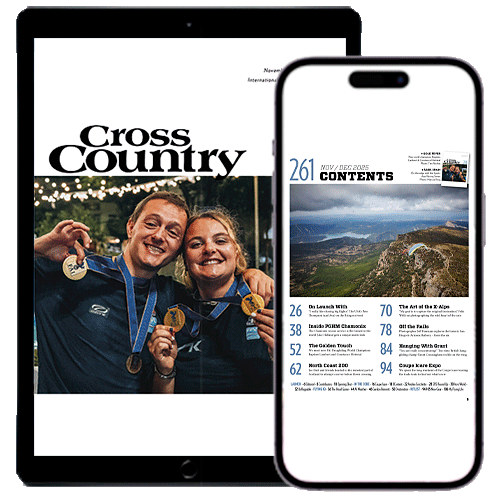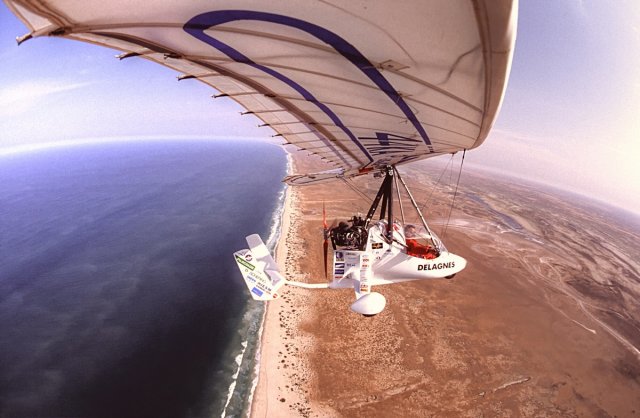
By Guy Delage
Guy completed the first transatlantic flight by weighshift microlight in 1991. The French adventurer crossed from Cape Verde to Brazil, east to west. Battered by storms, Guy had to jettison his shortwave radio en route, and was very nearly joined by two flying fish! This is the story of his flight in his open cockpit, motorised hang glider: a 27-hour solo flight.
I reached Prahia, the capital of the Cape Verde Islands, eight days ago. I’ve basically slept by day in a soundproofed room at the residence of the French Ambassador, and woken up late each afternoon to continue my preparations.
The French mission allows me to use their fax machine and receive phone calls from France. My sleep schedule has fully shifted, and my trike is waiting and fully fuelled in the huge hangar of the airport. I’m as ready as I’ll ever be. I have dispatched my letters – possibly my last words to beloved ones.
A meteo fax arrives at 18:45 local time. The Inter Tropical Front (ITF) seems reasonably calm, but the forecasted winds are not too encouraging: a weak NE trade wind followed by a south Trade wind beyond the ITF. However there are few clouds over the island and the wind has dropped below 20km/h. It’s promising.
At 21:45, Meteo France provides me with weather updates from two ships in this part of the Atlantic. They indicate more favourable winds. Intuition tells me to go at once. Besides, with Christmas eve approaching there will be all kinds of problems connected with seasonal festivities. The dice are thrown.
The departure checklist begins: inform Meteo France that the ‘longest day’ has just begun, tell Radio France that the mission is on, get to the airfield and run the engine on three tanks to get rid of any trace of water, purge my bowels, fight with a controller who asks me to file a flight plan that was given 10 days earlier, dress myself and connect the urine disposal system, top up the tanks, load the food and flasks of hot coffee. Step into the machine, verify all systems OK, program the watches, verify the GPS program, set the radio frequencies, check the safety equipment, strap myself in, taxi up the runway and align the trike for take-off!
The Rotax 912 obeys and delivers its powerful blast. I have the feeling of rolling endlessly, then the tarmac lit by the headlight slips away. I’m airborne. Local time is 00:20. 1 climb above the runway and turn carefully: I have a very heavy load. Above the water I turn onto a 220-degree heading and slowly climb above the light stratus layer to 2500ft.
As you might imagine, I can count my number of night flights (around a familiar airfield and by full moon) on one hand. I’d attempted a night VFR qualification course at Nantes, but the club was unable to provide this form of training on a regular basis. As a result I was up in the sky with the best IFR instrument there is – the moon. I had SAL on the radio and set my course on a nice bright star. I forced myself to pilot without looking outside, dealing only with my three available instruments: an electric ball/slip indicator, a compass on the control bar, and the Transpak, the formidable GPS without which I would not be here to tell the story.
Gradually, the stratus layer changes into a carpet of cumulus forcing me to climb. As a result my speed reduces so I descend through the layer to get into a more favourable wind. Below, it is pitch dark and bumpy. Concentrating on the instruments, I try to stay on top.
My speed is close to 100km/h with a 12-15 knot tailwind as predicted by the ship observer. My altimeter shows 800ft. I look overboard and try and spot the surface of the ocean, to no avail. It’s too dark.
My adventure slowly turns into a nightmare. I manage to contact two Air France flights who relay my position to SA and Dakkar, and give me a Met report.
In the morning, a few gaps appear in the cumulus layer. I climb to 5,000ft. My speed has dropped a bit to 90km/h. I feel better, less tossed about. I drink a lot and force down some bananas and dry figs. Gradually the cumulus clouds grow taller and taller, and I have to dodge them. I maintain a 220′ heading.
Ten hours into the flight, hell awaits me. A huge column of rain spreads across the horizon. I know I should try to pass behind or after the rain. It grows into an enormous black wall with white forerunner alto-cumulus clouds barring my route. I am in clear blue sky but am already getting tossed about in violent turbulence. I dodge eastwards 150′, then 120′, then 100′.
The surrounding clouds are just enormous. Their tops are boiling. A gap opens to the east, but as I start flying towards it another cumulonimbus quickly develops, blocking me. Doing a half-turn, I catch sight of another cumulonimbus developing where I’ve just come from. I’m closed in. I continue along the black wall searching for a crack…
Under the clouds, I descend to 300ft above the ocean, really afraid, and totally aware that the slightest mechanical failure would be deadly. If forced to make a water landing, there wouldn’t even be enough time to open my canopy and get myself out. It is 11:45. The cloud layer is so thick and black it obstructs my entire field of view.
Suddenly, there is a heavy downpour, and a great flash of lightning right in front of me and then my shortwave radio starts smoking. The display is dead. Three useless kilograms on my lap. Throw it overboard! I’m thrown into a vicious turn. The instruments indicate 190ft! There is no escape from the omnipresent storm. I bounce around the cockpit and hit the wing with my headset. Suddenly I am glued to the wing with the vario blocked at ten down. Even full throttle makes no difference. I’m certain I’ll crash, the water is just metres below my wheels. Two flying fish hit the windscreen. I just manage to climb again, trying to turn to escape the clutches of the monster. I’m in a terrible gloomy struggle with no visual landmarks, concentrating on my instruments alone.
Is this a nightmare or am I hallucinating? One and a half hours later a ray of light appears. Dawn. I emerge into a succession of black walls and curtains of rain. I am on another planet, a magnificent and terrible vision. My hearing and sight are blurred, my mouth is dry. I feel faint. I force myself to swallow some chocolate and drink water. I think of my two sons and all those who believe in me. Try to relax, remember the plan, eat, drink, urinate, hang on to the vital functions, that’s all there is left – and the instruments.
Again I find myself engulfed by the storm, convinced this time I am going to die. This insane struggle takes three full hours. It grows lighter, then gaps appear in the cumulus, the wind has suddenly veered to the south. I look behind me to see a monster cumulonimbus that bars the entire horizon and covers me with its anvil. I decide to risk climbing. At 8000ft my speed increases from 30km/h to 60km/h. I am still alive.
I’m totally exhausted, my limits are long exceeded, yet I must hang on another 12 hours at least: there’s 1,000km left to go. My stomach, kidneys and bowels are as tight as a knot. Weeing is the only way to relax for a few moments.
Forget the damned GPS, the compass, try to extract myself from this abyss, try to rest, write a few words on the distress beacon…
At 7,000ft, beyond the cumulus, below the sea is white, the crosswind strong, and my ground speed is about 70-75km/h. Mv subconscious does the piloting while I struggle to interpret my instruments. Can I hang on? Loss of consciousness is a constant menace. I have nothing left to eat.
500km short of landfall at the Brazilian island of Fernando De Noronha, a voice calls me. It’s an Air France flight en route to Paris. I break down in tears. Suddenly life exists somewhere else – it’s not only an illusion. They inform Radio France of my progress and give me a met report from San Fernando. Seven hours of flight left… hold on, rest a bit, relax.
Night falls quickly and the moon rises, illuminating cumulus clouds 3,000ft below. I ignore how long I can still hold on… Doubt invades my mind. 150km remain. I hear the voice of Christopher the photographer at Fernando De Noronha, trying to contact me. The GPS has been inactive for an hour, unable to pick up a signal. Will I find the island? Wait – there’s a gathering of clouds that look a bit different to the right. Do they indicate islands at sea? I descend below the cloud layer and see the beacon. It is there!
I confirm visual contact on the radio and descend. The runway is lit. Then suddenly the lights go off. A cliff jumps past my face. A last turn with my last bits of energy remaining, full throttle, and the runway reappears to my right. Death retreats once more… I line up once again, maintain the glide on the engine, then the runway is underneath and my wheels touch. A dozen people are standing there with the photographer, along my taxi way. I park the trike in the shade, anchor it, undress myself and lie down until my body stops trembling. I am suffering from severe shock.
It takes another 12 hours to recover from shock, during which I have to eat sugar and avoid sleeping. We had noted this problem during real 44-hour simulations. After 12 hours my abdomen stopped its convulsions and my cardiac rhythm returned to normal. Christmas is spent in total calm, trying to forget my memories of that infernal journey on another planet.


